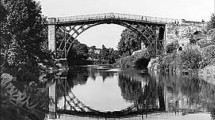Abstract
The Asian tsunami of 26th December, 2004 took the lives of 2,20,000 people and devastated coastal structures, including many thousands of brick-built homes. Many economically backward people who have made their homes in non-engineered masonry lost their shelters. Though very high waves of tsunami cannot be resisted, waves comparable to the height of the masonry structures can be tolerated by these structures by implementing simple design techniques which are cost effective and can be implemented without any modern equipment. The present study throws light on the issues related to effect of brick orientation, number of openings, orientation and shape of the structures with respect to possible direction of wave movement and effect of support conditions upon the performance of masonry structures subjected to tsunami loading. It has also been noticed that boundary walls acts as a barrier to reduce the effect on the actual structures. In this context, this study may be helpful in framing design guidelines for improving the performance of non-engineered masonry structures under tsunami loading.



















Similar content being viewed by others
References
J.D. Ramsden, Forces on a vertical wall due to long waves, bores, and dry-bed surges. J. Waterw. Port Coast. Ocean Eng. ASCE 122(3), 134–141 (1996)
H. Arnason, Interactions between an incident bore and a free-standing coastal structure. Ph.D. thesis, University of Washington, Seattle (2005)
D. Palermo, I. Nistor, Y. Nouri, A. Cornett, Tsunami loading of near-shoreline structures: a primer. Can. J. Civ. Eng. 36(11), 1804–1815 (2009)
N.I. Thusyanthan, S.P.G. Madabhushi, Tsunami wave loading on coastal houses: a model approach. Proc. Inst. Civ. Eng. Civ. Eng. 161(2), 77–86 (2008)
P. Lukkunaprasit, A. Ruangrassamee, N. Thanasisathit, Tsunami loading on buildings with openings. Sci. Tsunami Hazards 28(5), 303–310 (2009)
R. Triatmadja, A. Nurhasanah, Tsunami force on buildings with openings and protection. J. Earthqu. Tsunami 6(4), 1250024-1-17 (2012). doi:10.1142/S1793431112500248
K. Fujima, F. Achmad, Y. Shigihara, N. Mizutani, Estimation of tsunami force acting on rectangular structures. J. Disaster Res. 4(6), 404–409 (2009)
J.J. Wijetunge, A deterministic analysis of tsunami hazard and risk for the southwest coast of Sri Lanka. Cont. Shelf Res. 79, 23–35 (2014)
S. Nayak, M.H.O. Reddy, R. Madhavi, S.C. Dutta, Assessing tsunami vulnerability of structures designed for seismic loading. Int. J. Disaster Risk Reduct. 7, 28–38 (2014)
C. Tarbotton, F. Dall’Osso, D. Dominey-Howes, J. Goff, The use of empirical vulnerability functions to assess the response of buildings to tsunami impact: comparative review and summary of best practice. Earth Sci. Rev. 142, 120–134 (2015)
Bureau of Indian Standards (BIS), Common burnt clay building bricks—specification (fifth revision), IS 1077:1992 (reaffirmed 2002). BIS, New Delhi (1992)
BIS, Burnt clay fly ash building bricks—specification, IS 13757:1993 (reaffirmed 2007). BIS, New Delhi (1993)
B.K. Maheshwari, M.L. Sharma, J.P. Narayan, Structural damages on the coast of Tamil Nadu due to tsunami caused by December 26, 2004 Sumatra earthquake. ISET J. Earthq. Technol. 42(2–3), 63–78 (2005)
Author information
Authors and Affiliations
Corresponding author
Rights and permissions
About this article
Cite this article
Revanth, D., Akshay, B., Nayak, S. et al. Improving Resistance of Masonry Structures to Tsunami Loading. J. Inst. Eng. India Ser. A 97, 133–145 (2016). https://doi.org/10.1007/s40030-016-0155-1
Received:
Accepted:
Published:
Issue Date:
DOI: https://doi.org/10.1007/s40030-016-0155-1




